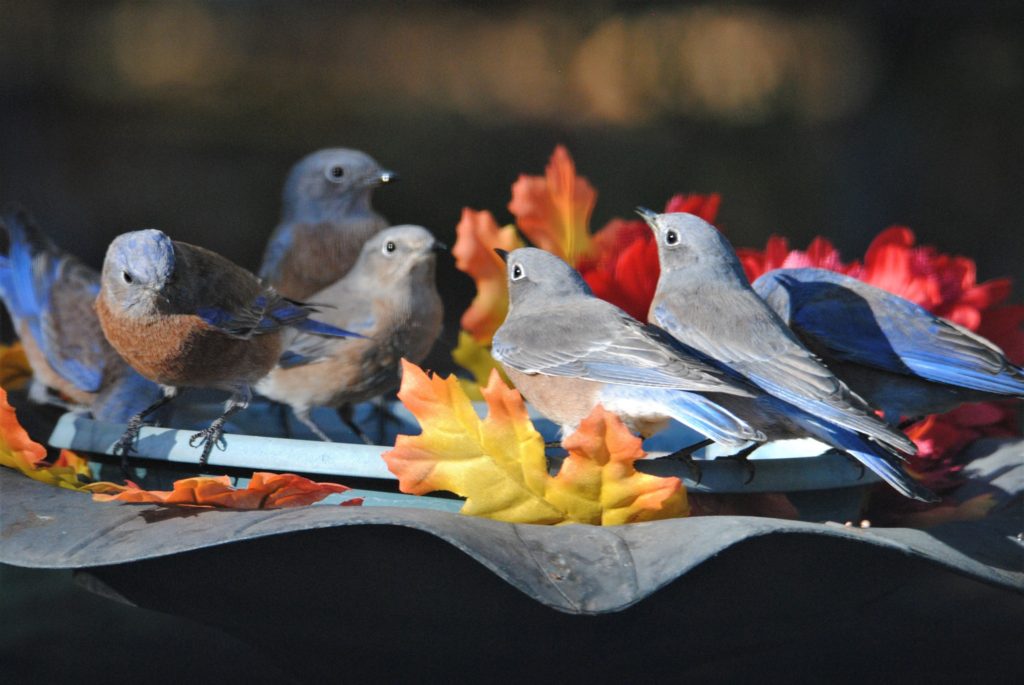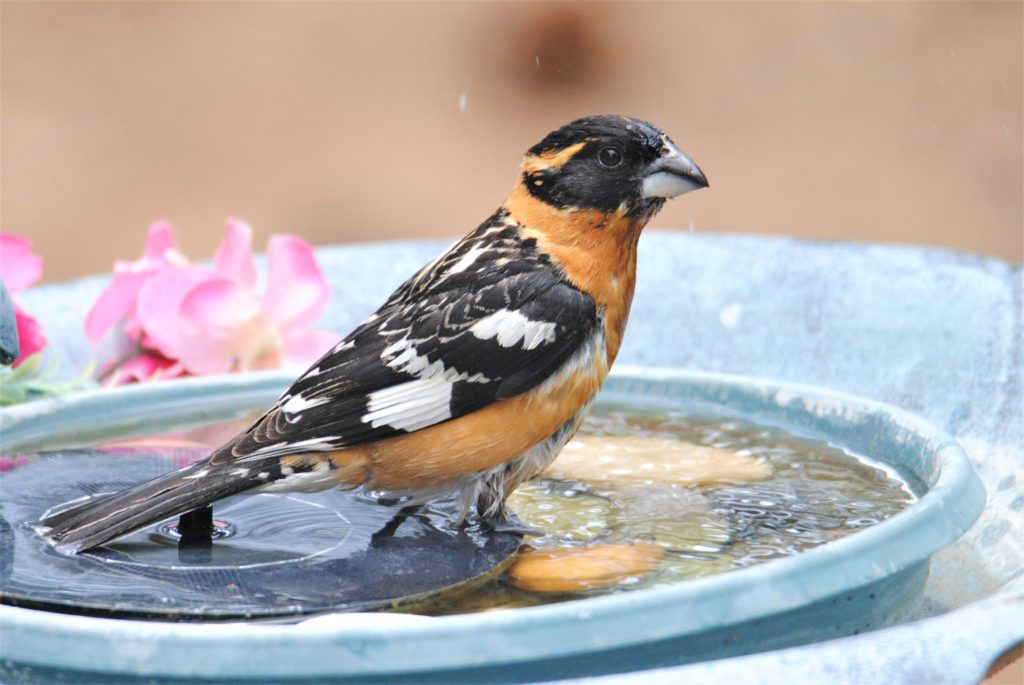Our Story
Listen to our story with this audio player, or read our story below …
 In September of 2016, the National Wildlife Federation, America’s largest wildlife conservation and education organization, recognized us for having successfully certified our wildlife habitat through its Garden for Wildlife program.
In September of 2016, the National Wildlife Federation, America’s largest wildlife conservation and education organization, recognized us for having successfully certified our wildlife habitat through its Garden for Wildlife program.
We certified our mountainous habitat in New Mexico in response to the “Dog Head” fire and the sudden influx of both birds and wildlife on our property.
2021 was a strange year for all of us with the continuation of the COVID pandemic. Stay at home orders and a polarizing political environment resulted in mounting pressures and concerns everywhere. Thankfully, our wildlife habitat and bird sanctuary remained our safe haven and place of mental refuge through it all.

We monitor bird traffic at our feeders and baths, and record changes in visiting species on a monthly basis. In 2021, our count of visiting species dropped from 46 to 39. Common visitors to our bird sanctuary continued to include chickadees, Steller’s jays, juncos, pine siskin and house finches, while first time visitors included: a Western Screech Owl and Cedar Waxwings.
But providing water is the most critical aspect of what we do and that’s because a bird can die from dehydration before it will die from starvation, especially during critical winter months or droughts when water is scarce.
This year we were beary-aware as we had unusually high traffic of our local black bears (which come in all colors including brown, cinnamon, and blond). While we stopped feeding the birds during bear season, the bird baths were still quite the draw, especially for the migratory birds.
 Our wildlife habitat and bird sanctuary sits in the Manzano Mountains, a small mountain range in the central part of New Mexico, with the center of the range situated about 25 miles southeast of Albuquerque. At about 7,600 feet in altitude, our coniferous forest is abundant with Rocky Mountain Juniper trees, Pinion and Ponderosa Pines, and Scrub Acorn bushes. Food sources, protective covering, and natural nesting sites are plentiful.
Our wildlife habitat and bird sanctuary sits in the Manzano Mountains, a small mountain range in the central part of New Mexico, with the center of the range situated about 25 miles southeast of Albuquerque. At about 7,600 feet in altitude, our coniferous forest is abundant with Rocky Mountain Juniper trees, Pinion and Ponderosa Pines, and Scrub Acorn bushes. Food sources, protective covering, and natural nesting sites are plentiful.
We call this place our “little slice of heaven” but the wildlife and birds call it “home”.
Glad you found us!